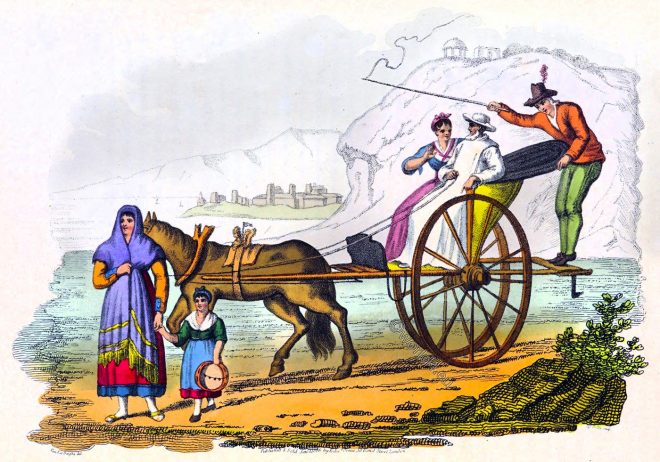The sites of the numerous villas which once overhung every point of the romantic dells of Tivoli must be in great measure imaginary
Category: 19th Century
Naples from the castle of St. Elmo. Italian scenery in 1817.
St. Elmo. From this spot the forked top of Vesuvius is perhaps more intelligible than upon a nearer inspection.
Naples Italy. A calessino, or hired carriage, Hackney chaise.
A calessino. Italian scenery; representing the manners, customs, and amusements of the different states of Italy.
Char-aina. Thick padded Coat with four body pieces of plate Armor.
Armory of H.H. The Nawab of Tonk, Rajputana (Muhammad Ibrahim Ali Khan 1848-1930), Central India.
Byzantine Orthodox. Abyssinian. Patriarchal type. The imperial family.
Byzantium and Abyssinia. Patriarchal type. The Maronites and the Byzantine Orthodox churches. The Abyssinian Cross. Emperor of the Eastern Empire and Princes of the Imperial Family. The Tiara and the Crown.
The art of enamelling in India. Traditional enamelers.
The art of enamelling in India. Traditional enamelers of India at work.
A Procession of the Emperor Akbar Shah II surrounded by his court.
The procession represents the Emperor, Akbar Shah II., surrounded by all the pomp of his court, proceeding along the edge of the Jumna river, accompanied by the British Resident and his staff. It is very characteristic of the past glories of the great Moghul House.
Icelandic costumes. Travels in Iceland during the summer of the year 1810.
Travels in the island of Iceland during the summer of the year MDCCCX, by George Steuart Mackenzie a. o.
Bronze stage shoe of Ada Cavendish with Louis heel. Victorian Era.
Three bronze shoes, the first worn on stage by the actress Miss Ada Cavendish. Ladies’ Dress Shoes of the Nineteenth Century.
Neapolitans eating macaroni. Italian scenery, manners and customs 1809.
The plate represents a country maccaronara; for so are called those public houses where nothing but macaroni is sold; and no village is without them. The Neapolitan macaroni is easily known by not being twisted like that of Genoa, but straight, or bent only at one end.










